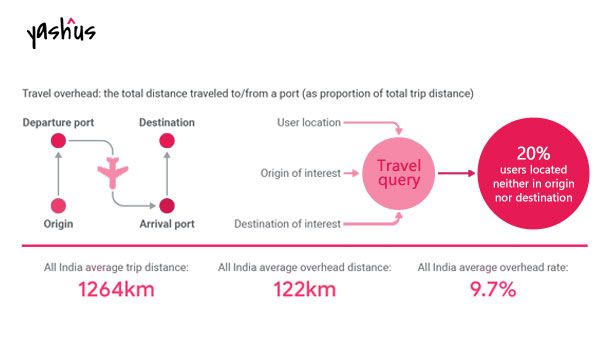
From airports and supermarkets to cafes: Let data decide your next location
A new white paper shows how India’s Ministry of Civil Aviation sought Google’s support to parse econometric, dynamic data in real time to help pick sites for future airports ― and how “location-casting” can benefit decision-makers in almost any industry.
Setting out an arrangement for facility locations is a great test for organizations of every kind imaginable. This is the situation for every organization around the globe — from retailers to governments and corner stores to department stores — particularly in India. Since healthy returns and high efficiency sit at the center of both public and private entities, pioneers are consistently trying to reach the ideal point where anticipated demand meets ROI.
Survey-based reports and demographic statistics are computed by standard algorithms. Now, with Google’s “location-casting,” organizations can utilize machine learning and AI to filter through an enormous amount of anonymized information and search queries to recommend a lot of locations that at the same time mull over variables like consumer demand, effective costs, profits, and future sites.
Success story: locating India’s next set of airports
India’s Ministry of Civil Aviation was one of the first organizations to utilize location-casting to address the nation’s complex system of airports. Its objective was to comprehend where traveler requests were the greatest, but also which blend of airports would fulfill that need most effectively and with the best ROI.

India had only 75 airports when its aspiring program of UdeDeshkaAamNaagrik (“A Common Man Can Fly”) began in 2016 – which is considered very low for a vast country with billions of people residing in it, while China had around 200 and USA with 5000 airports. The ministry’s research revealed two ideas that served as the foundation for its year-long query:
Domestic airlines carried nearly 117 million fliers in 2017 alone (a 17% increase from the previous year)
97% of India’s population had never set foot on an airplane.
As India is progressing, being a fast-growing economy, it became obvious that new fliers would soon submerge the country’s aviation infrastructure. More air terminals were required, and quickly. In any case, the ministry still pondered: which network of city and provincial airports would expand comfort for the vast majority without making redundancies? To find a solution, the ministry expected to answer a host of complex inquiries:
- Where is demand the greatest?
- What is the optimal network of airports?
- How will economic and sociological growth impact these equations? How should the ministry expect these proportions to change over the next decade? Over the next 30 years? 50 years?
By looking at search queries generated by India’s internet-savvy citizens, India’s aviation officials thought about whether it is conceivable to find the optimal locations for their next set of airports. In other words, could general digital activity help the Ministry understand factors like regional travel intent and consumer sophistication?
The search for “optimality”
Well, this piece of riddle was coined by Google – “optimality”. Simply, each additional airport changes the demand pressure on the entire existing network.The ideal arrangement is one that serves the vast majority while lessening the most overhead for travelers (taking into consideration factors such as time and costs of travelling to and from the airport).
Google evaluated that there were 75 billion conceivable approaches to pick ten locations from 60 potential cities.With the assistance of AI, Google fabricated 100,000 models utilizing around 300 possible factors (such as public utilities, educational establishments, arrival and departure queries, etc.) and afterward ran 10,000 simulations of airport deployment to calculate maximum optimality.

The outcome? An intricate map showing how best to unlock India’s latent flight demands.Google proposed ten “ideal”airport locations across India, ranging from Ludhiana (with a large population of 2.1 million) down to Mavelikara (with a small population of 300,000, but a large regional catchment).
From the 10 shortlisted airport sites, the ministry chose 7 for the initial round of construction, and an additional 30 sites out of 40, were subsequently chosen for the next.
In today’s data-driven world, solutions like these are empowering business leaders to think beyond the norm and make data-informed business decisions. This truly unleashes the power of digital, with its ability to optimize every phase of our lives.



